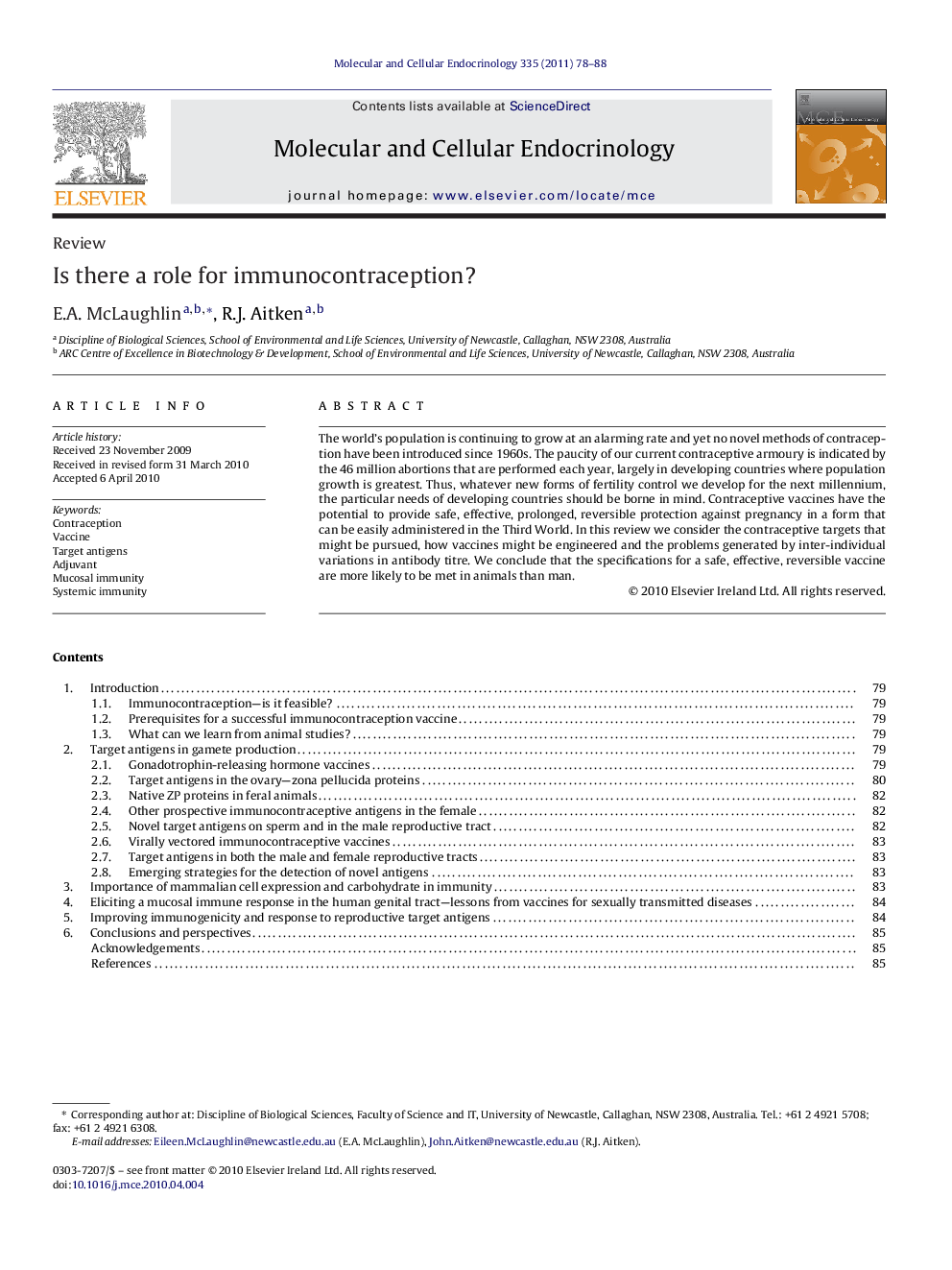| Article ID | Journal | Published Year | Pages | File Type |
|---|---|---|---|---|
| 10956367 | Molecular and Cellular Endocrinology | 2011 | 11 Pages |
Abstract
The world's population is continuing to grow at an alarming rate and yet no novel methods of contraception have been introduced since 1960s. The paucity of our current contraceptive armoury is indicated by the 46 million abortions that are performed each year, largely in developing countries where population growth is greatest. Thus, whatever new forms of fertility control we develop for the next millennium, the particular needs of developing countries should be borne in mind. Contraceptive vaccines have the potential to provide safe, effective, prolonged, reversible protection against pregnancy in a form that can be easily administered in the Third World. In this review we consider the contraceptive targets that might be pursued, how vaccines might be engineered and the problems generated by inter-individual variations in antibody titre. We conclude that the specifications for a safe, effective, reversible vaccine are more likely to be met in animals than man.
Related Topics
Life Sciences
Biochemistry, Genetics and Molecular Biology
Cell Biology
Authors
E.A. McLaughlin, R.J. Aitken,
